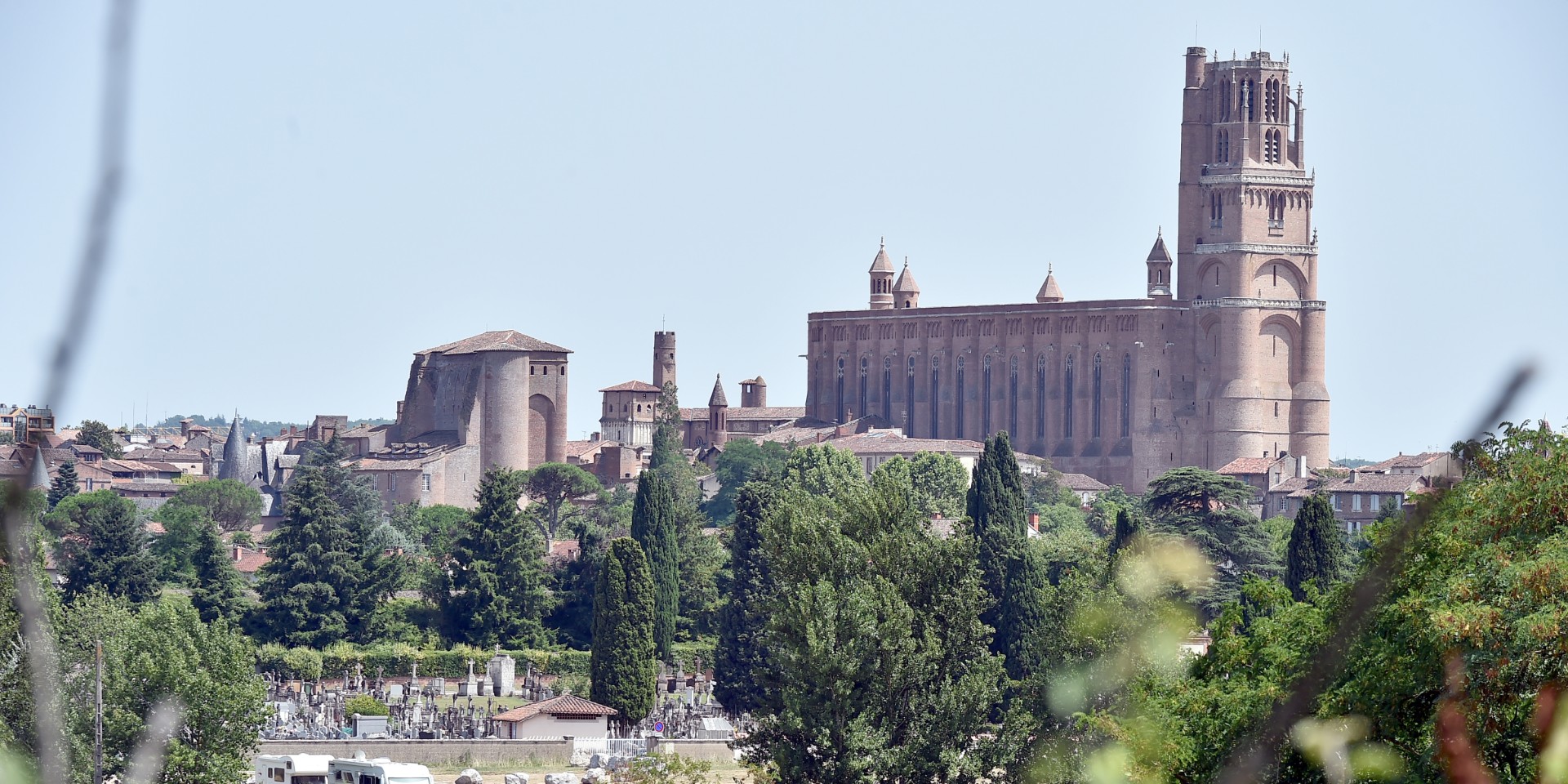Albi "the fascinating", "the majestic", "the seductress", "the bewitching". Remained in the shadow of Toulouse, Albi, more intimate than its neighbor of Haute-Garonne, nevertheless deserves to be known . The city is not the only attraction of the Tarn. In the middle of the hills and the curves of this bucolic landscape nestle villages of character, which our columnist Jean-Bernard Carillet invites you to discover in the program "Et si on partait?".
The Sainte-Cécile cathedral in Albi
Sainte-Cécile is the largest brick cathedral in the world: 113 meters long, overlooking the Tarn. From the outside, it has the allure of a fortified castle, a military aspect and a bit austere, far from the style of the cathedrals north of the Loire. Inside, however, the atmosphere changes completely. The splendid paintings of the vault, colored in blue and gold tones, and the immense frescoes give the impression of being in front of a fabulous comic book or a work of science fiction. Visitors will notice the representation of the Last Judgment and the seven deadly sins.
The interior consists of two parts, the nave and the choir. In the latter met the canons, priests or monks attached to this cathedral. The general appearance is reminiscent of Umberto Eco's film, The Name of the Rose. Some 200 statues are enthroned around the choir. The detail of the clothes, the features of the faces and the folds of the skin is so precise that it looks like they will come alive.
A collection of works by Toulouse-Lautrec
Right next to the cathedral is the magnificent Toulouse-Lautrec museum. It has the largest collection in the world of works by the native painter of Albi, who died in 1901. Posters, portraits and drawings follow one another. Visitors will no doubt be surprised at the sight of certain posters representing rather daring scenes with prostitutes in Parisian parties. Henri de Toulouse-Lautrec assiduously frequented the nightlife.
>> Gastronomy, music, tourism: discover all our summer topics here!
Le Ségala, a former mining site
In the north of the Tarn, the Ségala region is distinguished by its hills. In the middle of this rural landscape emerges the town of Carmaux. It's a little trip back in time that takes you back to the last century, to the time of the coal mines, with Jaurès haranguing the crowds. Coal mining was completed in 1997 but the city seeks to keep track of its past. The nostalgia for a universe that has now disappeared is still alive there. At the exit of Carmaux is the largest open-cast coal mine in Europe: the kilometer-long crater seems to have been dug by a meteorite. The site also includes a play area, with zip lines, beaches, and the possibility of mountain biking, skiing or even water games.
Villages sheltered from the ramparts
The Tarn is full of villages of character, including that of Cordes-sur-Ciel, a sort of "Barbie doll" of tourism in the Tarn. Sheltered by the ramparts, on a rocky outcrop, this medieval city seems straight out of a fairy tale: it includes cobbled streets, mansions, art galleries and craftsmen's workshops. Tourists can also appreciate the village of Puycelsi and its half-timbered houses. It is also located on a rocky outcrop, facing the forest of Grésigne.

